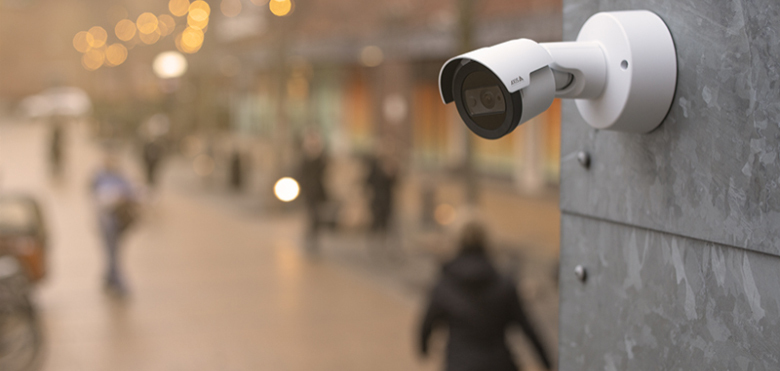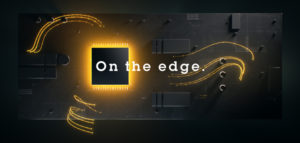Understanding the essentials of video surveillance
Video surveillance is the use of video cameras and other devices to monitor, analyze, and document activities in particular locations. In this piece we will talk through the fundamental principles of video surveillance by outlining:
- The basic composition of surveillance systems
- The different types of cameras that can be used
- How analytics technologies are enhancing surveillance capabilities
- Defining remote video surveillance and its benefits
- A short summary of how surveillance technology has evolved
Video surveillance is most commonly used for security and safety purposes. However, video surveillance cameras can support a wide number of applications beyond security and safety. These involve people counting, traffic and parking management, improving and monitoring processes, and much more.
Because of these benefits, video surveillance has become an integral part of life. It supports urban planning and management schemes. Drives operational efficiencies in business and public services. Ensures health & safety compliance. All on top of its traditional security and safety uses.
CCTV, IP or network video: what’s the difference?
CCTV (closed-circuit television) is often used synonymously with video surveillance. However, CCTV describes only a very specific set-up. As the name suggests, it operates in a closed circuit. This means the video feed only goes to a specific monitor and recorder for security purposes.
IP or network video surveillance cameras, on the other hand, connect to a network. This allows them to integrate with other systems like access control or video analytics. Which in turn helps provide more advanced video surveillance capabilities.
Video surveillance systems: a birds-eye view
Video surveillance systems consists of many elements. At the edge are the devices themselves. Cameras are often coupled with speakers, access control, lighting, microphones or intercoms, and other types of sensors.
These devices then feed into a recorder server, typically referred to as a recorder, DVR (digital video recorder) or NVR (network video recorder). This location is where the footage is initially stored and processed. It also runs the video surveillance management software (VMS) that drives and manages the cameras and other connected devices. Depending on the scale of the system, these recorders may then link up to a final central server, off-site.
The recorder then finally connects with the workstation, the end of the system chain. The workstation runs the client version, the user interface, of the VMS software and is coupled with a monitor(s), phone, or tablet. This is where the action happens. Here, users can:
- Review, search for, and analyze footage.
- Choose which footage to archive.
- Program device behaviors and functions, such as camera pan and tilt.
- Or even run advanced analytics like forensic searches.
Types of video surveillance cameras
There are many different types of video surveillance cameras. Each has its own advantages and specialist applications. Here are some common types:
- Box cameras are the most standard form factor of surveillance cameras. They are easy to spot and have a fixed angle of view. They want to be seen, and to let you know you are too. Because of that they act as deterrent and are ideal for various surveillance situations.
- Bullet cameras are named after their cylindrical shape. Their versatility and deterrent effect make them a popular in most security applications.
- Dome cameras are protected against redirection, defocusing and impact. Their shape also disguises which way the cameras are pointing. Because of these features, they are suitable for discreet surveillance.
- Modular cameras are highly discreet cameras with detachable components such as sensors, cables, and main units.
- Panoramic cameras afford wide-area coverage with just one camera.
- Pan, tilt, and zoom, or PTZ cameras can be controlled by an operator or move between pre-set positions. They can respond to detected events and track objects in great detail.
- Explosion-protected cameras are built for potentially combustible environments. This makes them ideal for keeping an eye on hazardous areas.
- Thermal cameras provide accurate heat-based detection. This lets them see in complete darkness, challenging light conditions, light fog, and smoke.
Enhancing video surveillance with analytics
Analytics and AI can enhance video surveillance systems in many ways. At a basic level, analytics enables functions like motion detection or boundary crossing. This is already useful for intrusion protection, people counting, traffic violations, or even parking availability for instance.
Adding deep learning to cameras enables them to determine the types of objects they can see and their characteristics, such as humans and vehicles and the color of clothing or paint. This enables more advanced forensic search functions when reviewing footage. For instance, you could directly search: “Find the man with the blue coat, at the parking garage, in front of a red truck.”
Advanced analytics can train systems to recognize unusual or suspicious activities, for instance someone who is running from a scene, the sound of glass breaking in an office late at night or a vehicle driving in the wrong direction on the highway.
These examples only scratch the surface of how analytics can enhance video surveillance. All these, however, is possible from the creation of data and metadata by the device’s embedded analytics capabilities.
Understanding remote video surveillance
Remote video surveillance describes the ability to monitor and manage video surveillance systems from other locations. It takes advantage of IP camera technology, allowing access to even very remote sites.
The advantage of remote video surveillance is that it allows system access from (almost) any location. This is particularly useful for multi-site management. Businesses such as coffee store chains or gas stations, will often have a centralized Security Operation Center.
Industrial industries also benefit greatly from this remote access. Construction sites, offshore or remote drilling, mining, and energy farms, are often in the middle of no-where. Without remote access they would be incredibly high-value blind spots. As well as thief deterrence, remote video surveillance systems can:
- Provide personnel authorization and site access.
- Monitor for health, safety, and environment (HSE) flags.
- Even monitor for leaks or other hazardous occurrences.
Healthcare is also taking advantage of remote video surveillance in how it cares for patients. Technologies like remote patient monitoring allow patients to be observed from afar.
It also provides immediate digital access to healthcare practitioners. Smart cameras with audio capabilities are often coupled with telemetry devices which monitor a patient’s vital signs. This allows healthcare practitioners to observe patients in real-time. It also enables fast response for critical care, alerting local medical staff to an issue in real time.
How video surveillance technology has evolved
Video surveillance technology has evolved significantly over the years. CCTV was first commercially available in 1949. Initially an analogue technology, CCTV recorded footage via a videocassette recorder (VCR).
Years later, the introduction of digital recording brought about a major shift. These new digital video recorder systems (DVRs) replaced VCRs. They enabled higher image quality, longer recording durations, easier storage, and longer-lasting footage.
The next leap forward was to internet protocol, or IP cameras. Axis Communications invented them in 1996.
The cameras connect and transmit footage via computer networks. Video data was now shareable over local area networks or the internet. Suddenly, surveillance was able to integrate with other systems, be accessed anywhere, and easily scaled. All the while, the creation of high-definition and megapixel cameras increased the fidelity of footage.
To complement IP cameras, the creation of network video recorders (NVRs), would supersede DVRs. This new generation of recorders takes advantage of the network. They provide remote storage access, flexibility, improved scalability, and centralized management of the video surveillance system.
Cloud-based video surveillance took network connectivity one step further. Its unique offering reduces the need for on-site storage and hardware.
Access is also possible from anywhere with an internet connection. Usage, however, remains scenario specific. Certain IT policy and security constraints can prevent some cloud deployments.
Progress then focused on video and software analytics capabilities. Most recently, the integration of AI and edge-embedded processing has vastly improved functionality.
And the explosion of internet-of-things (IoT) devices fundamentally changed what is possible. By integrating new sensors and data feeds, systems can now carry out highly complex tasks.
Both physical and digital processes can be automated. Users can create advanced situational alerts and event management systems. The data can even inform strategic decisions.
Find out more on Axis video surveillance offering here:



